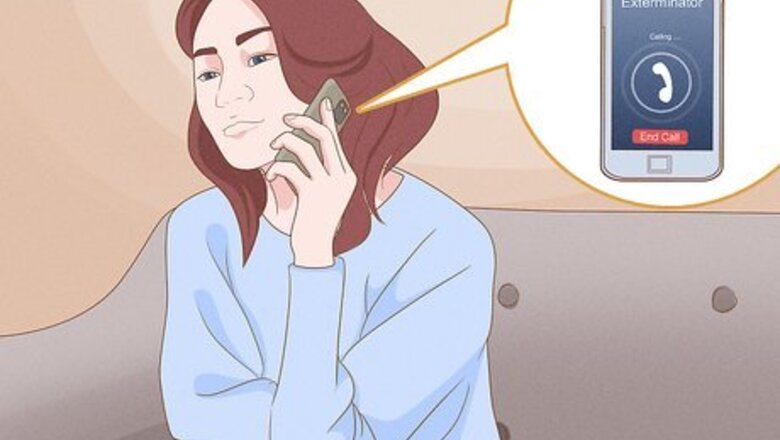
views
Taking Precautions and Purchasing Products

Call an exterminator for best results. You’re probably trying to get rid of these yellow jackets on your own, but in some cases that may not be possible. If you don’t know where the nest is, if you’re allergic to yellow jackets, or if you’ve tried several strategies and still have a problem with yellow jackets in your walls, it’s best to contact an exterminator. These professionals have experience dealing with pests and can eliminate the problem for you.
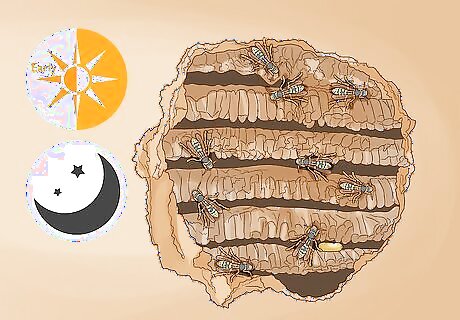
Treat the nest at night early in the summer, if possible. It’s best to treat a yellow jacket nest before the colony grows to an unmanageable size. The colony will grow over the warmer months, so it’s best to handle the problem as early as possible. Treating the nest at night ensures that most, if not all, of the yellow jackets are inside. The yellow jackets will die off in the winter, so if the nest is in an unused space (like an attic), you could simply wait for their life cycle to end.
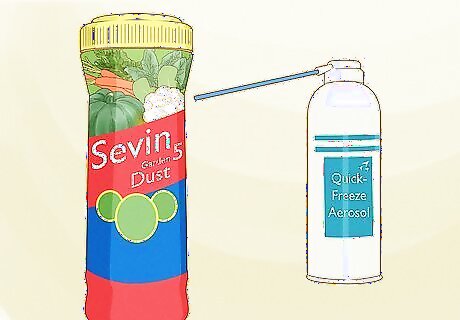
Purchase a quick-freeze aerosol product designed to kill yellow jackets. Because the yellow jackets are inside a structure, you can’t use dust, like Sevin 5 Garden Dust, to kill the yellow jackets. You’ll need a quick-freeze aerosol product designed to kill yellow jackets instead. Pick up several cans of this product from your local gardening center or home improvement store.
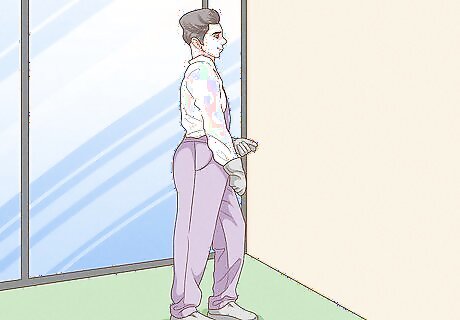
Wear protective clothing when dealing with yellow jackets. Yellow jackets can sting you, so it’s important to wear thick clothing and other gear to protect yourself. You should also get a netted hood, like those used by beekeepers, to protect your face and head. Wear long pants, a long-sleeved shirt, thick socks, closed-toe shoes, and leather gloves.
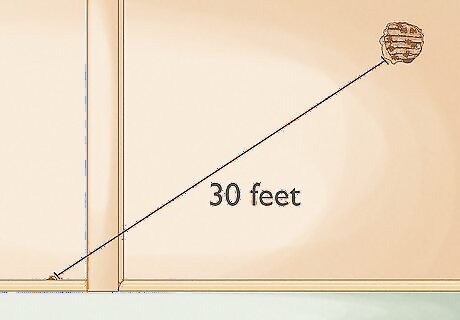
Find the entrance to the nest and the nest itself. In some cases, the entrance the yellow jackets use can be up to 30 feet (9.1 m) away from the nest itself. Generally, the entrance to the nest is outdoors. Inspect the structure for holes and try to determine where the yellow jackets are coming from. If you aren’t sure where the nest is, look for a shiny area of the wall. The yellow jackets can actually use the drywall for nest material, leaving only a layer of paint between their nest and your living space. You may also be able to hear the yellow jackets moving inside the walls. Find the area where the noise is the loudest, either by placing your ear against the wall or using a listening device.
Getting Rid of Yellow Jackets
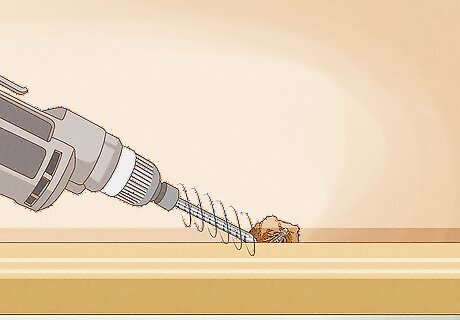
Drill a hole into the wall if the entrance isn’t near the nest. If the entrance to the nest is far from the nest itself, or if you are unable to find the entrance, you’ll need to drill a hole in the wall. The drill bit can be small—the hole only needs to be large enough to insert the nozzle of an aerosol spray can into it. Drill the hole as close to the nest as possible.
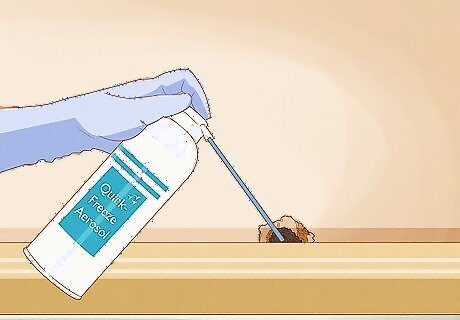
Spray a quick-freeze aerosol product into the hole immediately after drilling. You’ll want to act fast so the yellow jackets can’t escape. Immediately after drilling the hole, stick the nozzle on the spray can into the hole. Spray the entire can of product into the hole to kill the yellow jackets. If the entrance is very close to the nest, you can spray the aerosol product into the entrance hole instead of drilling a new hole.
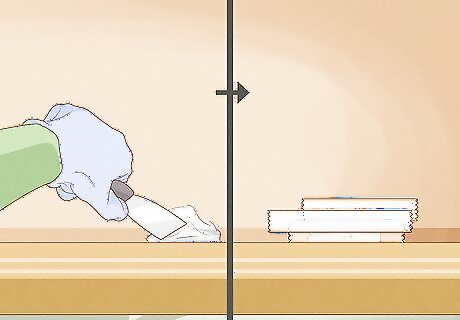
Seal the hole you drilled. It’s crucial to seal up the hole so the yellow jackets don’t emerge into your living space. Fill the hole with caulk or drywall mud, then cover it with masking tape.

Leave the entrance hole open. It’s important to leave the entrance hole open so the yellow jackets can escape. Otherwise, the ones left alive may find a way to enter your home, like through small holes around electrical or light fixtures.
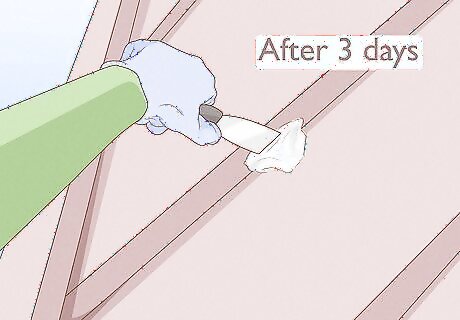
Repeat the procedure after 3 days if the yellow jackets remain. If you still see, hear, or notice yellow jacket activity in the walls, you may need to spray the nest again. Be sure to wear protective clothing and follow the same procedure to kill the remaining yellow jackets.
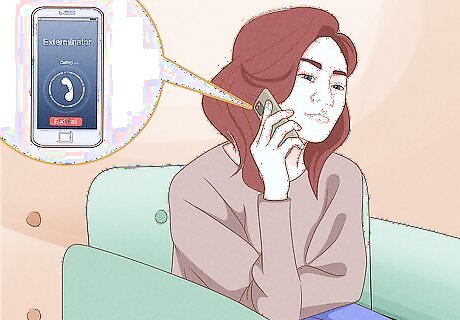
Contact an exterminator if the nest needs to be removed. In many cases, you can leave the nest inside the wall, like if it is in an attic. However, if there are lots of larvae in the nest, they can rot and attract other pests. If you want to remove the nest, it’s best to contact an exterminator as well as a contractor. They can work together to get rid of the nest and make repairs.
Preventing Yellow Jacket Nests
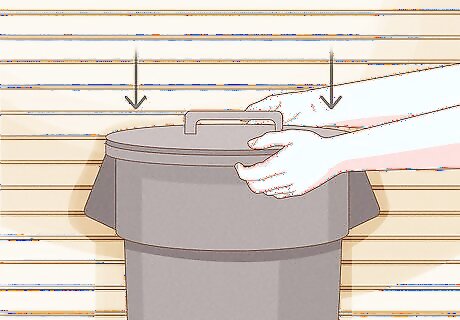
Put tight-fitting lids on your garbage cans. Yellow jackets are attracted by food waste, so if your garbage cans are open, you may be luring them in. Use tight-fitting lids to seal your garbage cans, both indoors and outdoors, to discourage yellow jackets from roaming around your property.
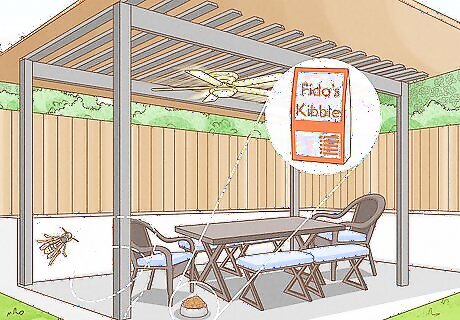
Keep pet food inside. A bowl of Fido’s kibble on the patio could be attracting yellow jackets to your home. Rather than leaving pet food and other sources of protein outdoors, be sure to store these items inside your home or garage. It’s best to store pet food in airtight containers. Dispose of any leftover food in the bowl once your pet is done eating.
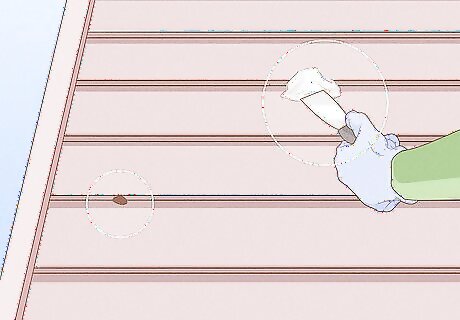
Seal any holes in your exterior. If you have holes in the exterior of your home, even if they are quite small, yellow jackets can get inside. Inspect your siding, screens, vents, and door jambs for holes. If necessary, replace the screens or weather stripping, or use caulk to seal up holes.
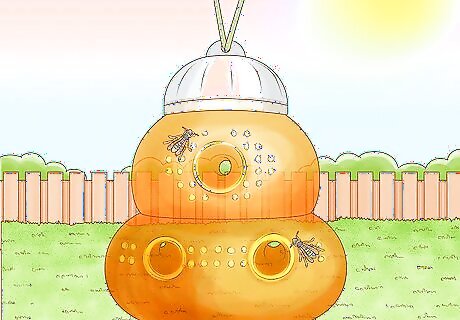
Set hanging traps to catch yellow jackets. If you see yellow jackets flying around your home or property, you can use a hanging trap to catch them. These traps use a sugar solution to lure the yellow jackets into a small hole. They cannot get out of the trap and will die.

















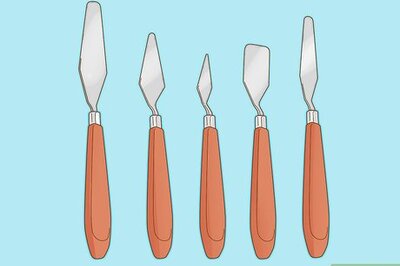

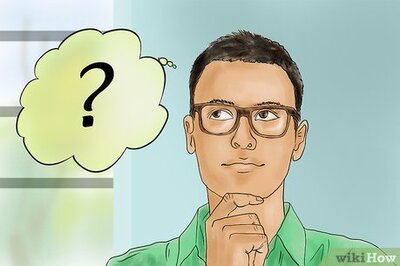
Comments
0 comment